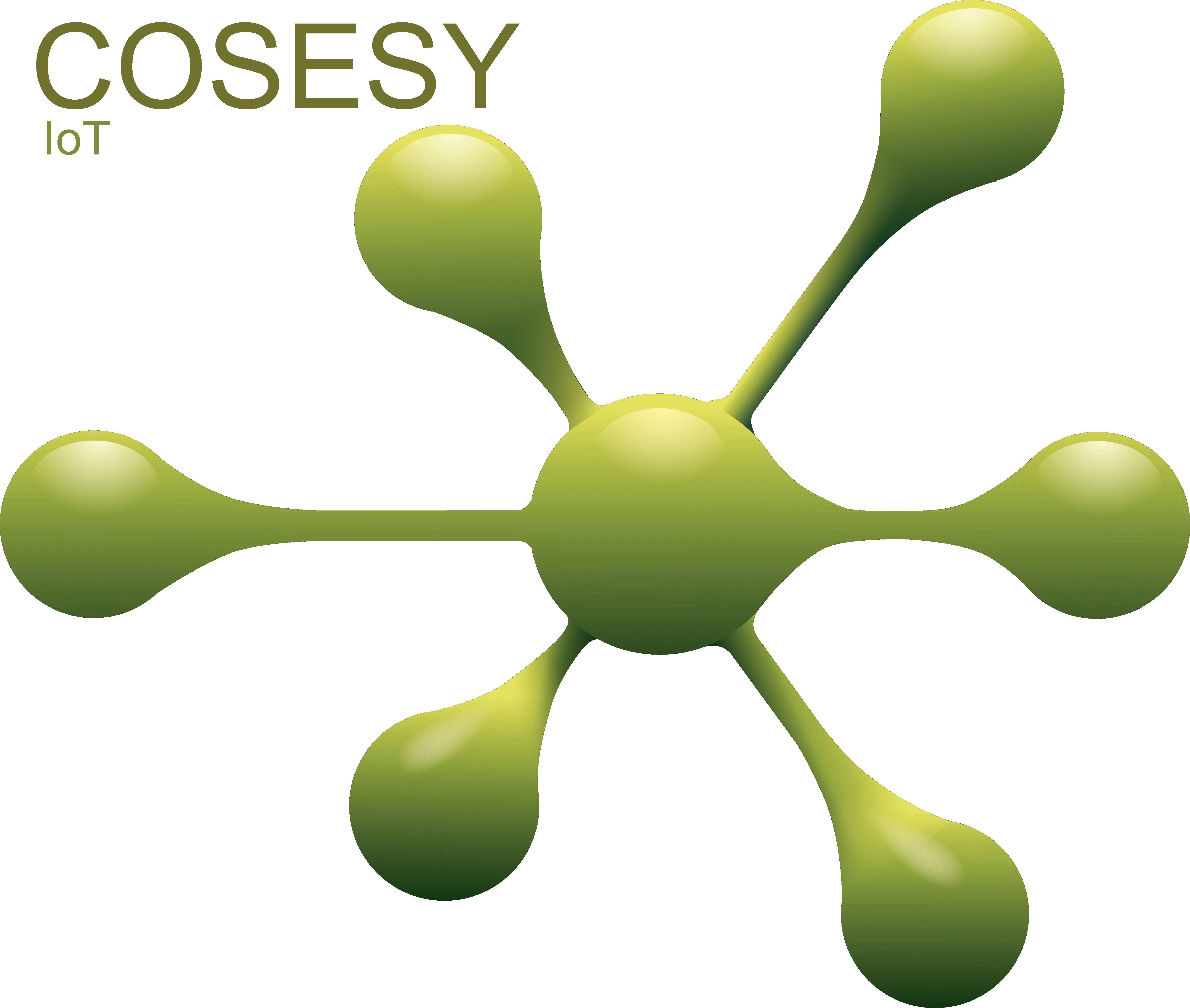What a Hub looks like!
A Hub, sometime called a Gateway, Central Unit or Base Unit, is a square white box with a power cord and a cable connected to your home router. A Hub with Cosesy inside, may look different depending on where you bought it.
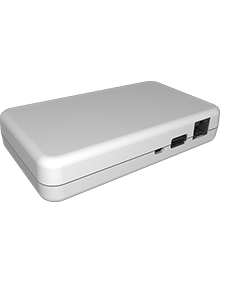
And how it looks in real life!
In real life, when placing the Hub close to your internet router, then it looks a bit more messy. But it is most often easy to find an empty slot (port) on your router to connect the cable and then power up the Hub using a Micro-USB power cord. Below is two installations using two different looking Hubs.
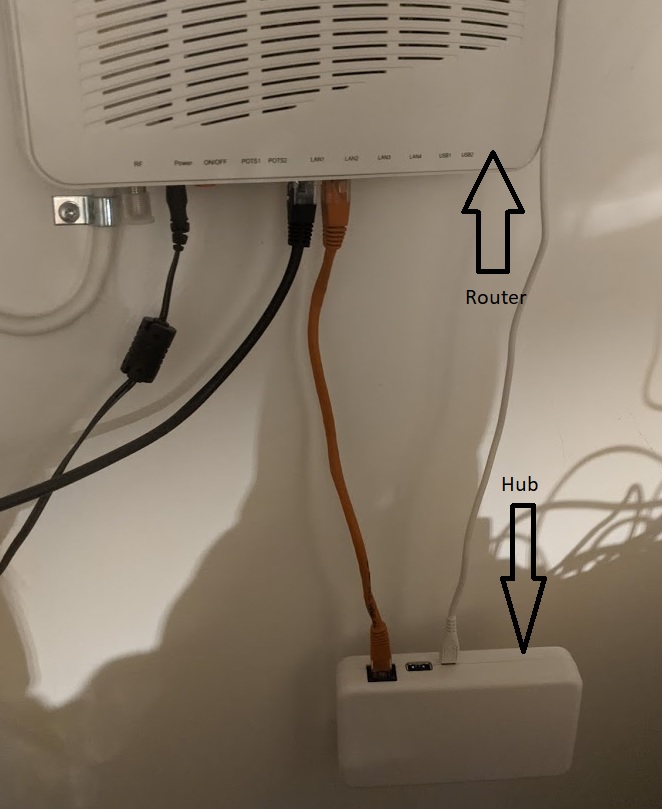
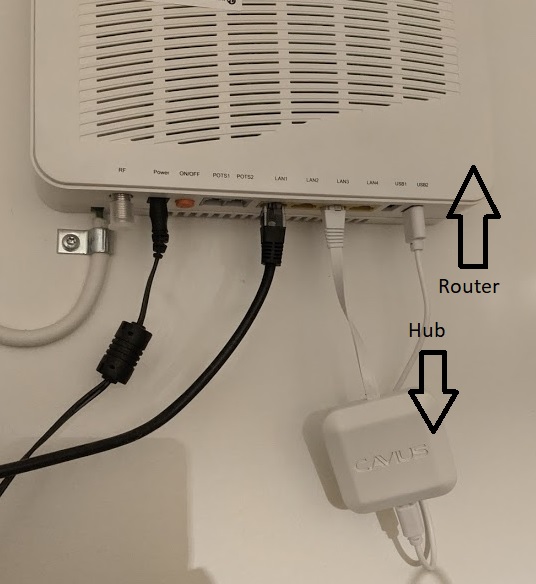
What does it do?
The Hub listens to sensors in your house on a radio frequency reserved for safety and security. It is in direct contact with Cosesy servers (and nothing else), to immediately alert your smartphone, neighbours, etc. in case needed.
When am I online?
When your Hub is online, then you can access the system via the Smartphone app. The Hub is all fine and connected once the green LED is constantly on (not blinking, no red light). It may take a few minutes from you plug in the cables until it is online and all green.
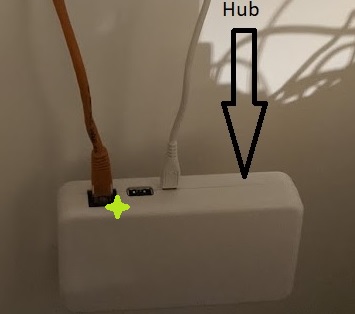
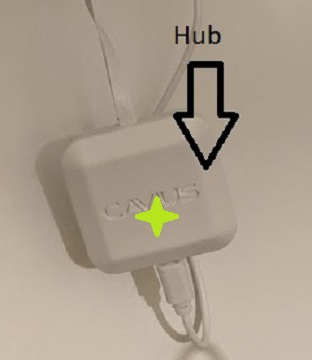
How is it secured?
The Hub uses a radio frequency reserved for safety and security when communicating with the sensors. Playtoys such as bluetooth, zigbee, z-wave and wifi devices does not disturb at this frequency. A Cosesy Hub is therefore much more immune and difficult to jam in comparison to most smarthome and smart alarms - very important when you need it for a security and safety system.
For internet connection, the Hub pairs with our dedicated internet servers, and nothing else. Encrypted ofcourse.
The key-fob is more secure than almost any car key, and it is not possible to copy your keys by replicating or modifying radio signals. The key-fob even shakes (as probably the only one in the world) to make sure you know the system has accepted an order from you.
Only the hub can transmit to your devices, to turn on the smartplug and sirens - very imporant to avoid a hacker from starting your toaster via a simple radio signal.
Why not GSM? - my old alarm had GSM!
Because the thief will destroy your alarm before it has a chance to dial you up. Your old alarm panel (with a keypad) may even have had a buzzer and be located close to the door to make it very easy to find and destroy.
A GSM alarm will have to establish a connection when an alarm is triggered. That may take time, and that is very easy to jam with simple radio equipment. A GSM alarm is not monitored 24/7, only when it dails in a few times a day - for the rest of the day, no one knows if it can actually deliver an alarm to you.
That is not secure and safe - that is not something we would recommend, and that is not something we will make.
Need help, Hub is offline!
We have written our best tips in our blog: click here to troubleshoot an offline Hub
If that does not help you, then don't hesitate to contact us. We have helped a lot getting online again, and maybe we can do the same for you.
Need help, lost my pin and my old phone. Cannot add Hub to the app.
Once the first user has connected to the Hub, then it is no longer possible to use the simple pin on the Hub to add another user. A new user will need an invitation from an existing user. All credentials are stored on your phone, if you loose it, then you will need a new pair of keys (from another user, or by contacting us on support).
If you have lost your access and no-one else can invite you again, then do not hesitate to contact our support. We will send a procedure back to you, and guide you through verifying that you are the actual owner and put you back in touch with your Hub.
How to add battery backup
(read more using this link, on why we do not place a battery inside, and why it is very bad for the climate. Instead, you should apply battery backup from the outside of the Hub casing)
The Hub is powered by a standard USB cable, using only a little power. You can therefore add an external battery backup and power it through other USB chargers (just like a phone).
The best, and rock solid security solution, is to use a router with battery backup. You can get it in stores and Amazon etc. It should have an USB port in which you can connect your hub (in addition to the standard ethernet port for the other Hub cable). That's all, and then you share this backup with all other things in your home too. Best for the climate and best value for the money.
A simpler solution is to use a power bank. Many have them at home. Simply plug it into the USB cable for the Hub to power the Hub from your power bank. Be aware that some power banks are not able to provide power while charging, and some are very "chineese" and may not be that great for the climate or perhaps insecure to leave unattended while charging.
How to add internet backup (SIM card)
(read more using this link, on why it is a really bad idea to place a SIM card slot inside the Hub. Instead you should apply and share such internet backups with more of your things at home, for saving costs and daily trouble)
The Hub is internet-connected with a standard cable, using only a small amount of data. You can therefore add external internet backup via that cable.
To get internet-backup, then ask your tele-company (ISP) for an extra SIM card. It is typically 3-15 euro/month in extra costs, and to get most value out of it, then you should share this SIM between all of your gadgets at home.
The simple solution is to ask your tele-company or local shop (or Amazon) for a router with SIM card backup. Plug your SIM card, regular internet, and Hub into that... and then you are done.
As a benefit, your door locks, cameras, philips hue hubs, etc, will also work when your regular internet breaks. Then you only have to pay for one extra SIM card for your entire house.
